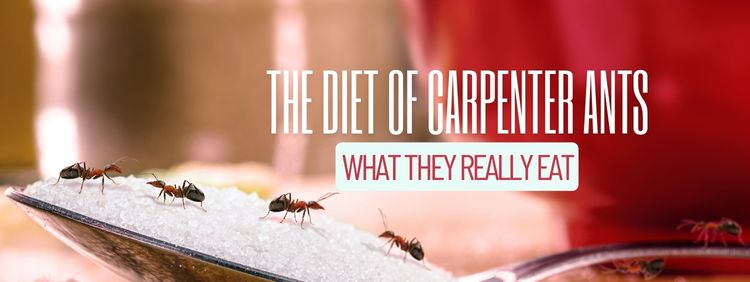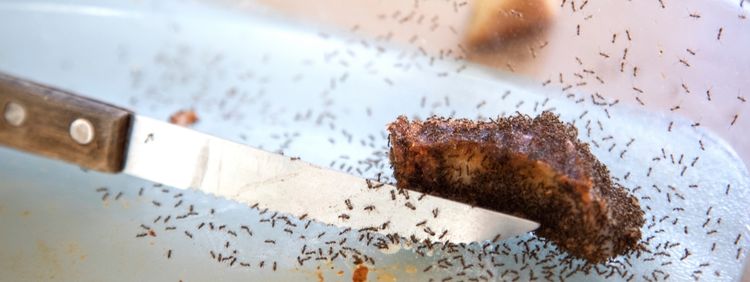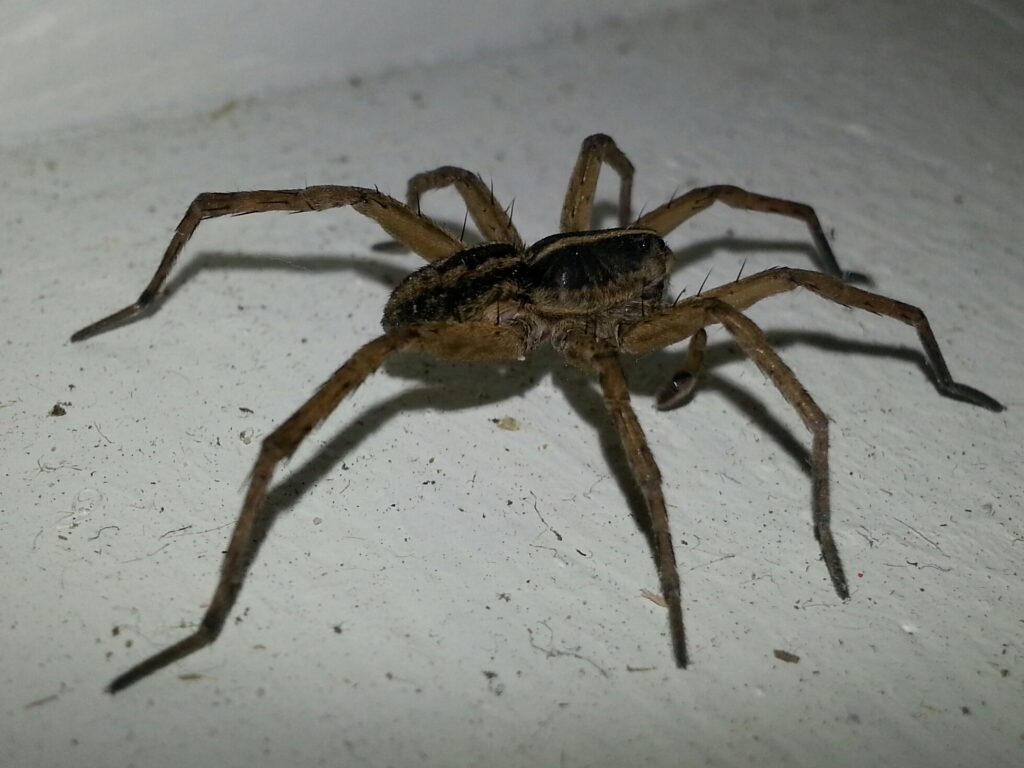 Understanding what carpenter ants eat is essential for anyone dealing with an infestation in their home. These ants have a varied diet, primarily consuming other insects and sugary substances. They are particularly drawn to honeydew produced by aphids and other insects. Unlike termites, carpenter ants do not eat wood.
Instead, they excavate it to create nests, which can cause significant damage to wooden structures. This makes it crucial to know how to find a carpenter ant nest in Kitchener if you suspect an infestation. These ants are also known for their habit of carrying dead ants out of their nests. This behaviour helps maintain the cleanliness of their living environment. If you've noticed ants carrying dead ants, it's a sign that you might have a larger issue at hand.
Addressing a carpenter ant problem promptly can prevent structural damage and save you from costly repairs down the line. By understanding their dietary habits and nesting behaviour, you can make more informed decisions about managing these pests effectively.
Understanding what carpenter ants eat is essential for anyone dealing with an infestation in their home. These ants have a varied diet, primarily consuming other insects and sugary substances. They are particularly drawn to honeydew produced by aphids and other insects. Unlike termites, carpenter ants do not eat wood.
Instead, they excavate it to create nests, which can cause significant damage to wooden structures. This makes it crucial to know how to find a carpenter ant nest in Kitchener if you suspect an infestation. These ants are also known for their habit of carrying dead ants out of their nests. This behaviour helps maintain the cleanliness of their living environment. If you've noticed ants carrying dead ants, it's a sign that you might have a larger issue at hand.
Addressing a carpenter ant problem promptly can prevent structural damage and save you from costly repairs down the line. By understanding their dietary habits and nesting behaviour, you can make more informed decisions about managing these pests effectively.
What Do Carpenter Ants Eat?
Carpenter ants primarily feed on sources of protein and sugar, which they require for energy and colony growth. In the wild, these insects consume a variety of food sources such as insects, plant nectar, and honeydew produced by aphids. These natural food sources provide them with the nutrients they need to thrive. When carpenter ants invade homes, they often seek out similar food sources. They are particularly attracted to sweet substances like syrup, honey, and fruit juices, as well as protein-rich foods such as meat and pet food. This dietary preference can lead them to kitchens and pantries, where they scavenge for crumbs and spills. Understanding what carpenter ants eat is crucial because it helps homeowners identify potential attractants and take preventive measures. By keeping your home clean and storing food properly, you can reduce the likelihood of an infestation. Additionally, knowing their dietary preferences can aid in effective baiting strategies for controlling these pests.How Carpenter Ants Locate Food Sources
Carpenter ants have a remarkable ability to locate food sources using their keen sense of smell. They rely on chemical signals known as pheromones to communicate with each other and mark trails to food. When a foraging insect discovers a food source, it leaves a pheromone trail for other insect to follow, leading them directly to the prize. This communication system allows carpenter ants to efficiently exploit food resources and bring them back to the nest. It's important to note that these insects do not consume wood for nutrition; instead, they excavate wood to create galleries and tunnels for their nests. Their food preferences remain focused on protein and sugar sources. To deter carpenter ants from invading your home, it's essential to eliminate potential food attractants. Regularly clean up spills, store food in airtight containers, and address any moisture issues that may attract these pests. By disrupting their food supply, you can make your home less appealing to carpenter ants.The Impact of Carpenter Ants on Homes
While carpenter ants play a beneficial role in the ecosystem by helping to break down dead wood, their presence in homes can be problematic. They can cause significant structural damage by hollowing out wooden structures to create their nests. This damage can weaken the integrity of your home over time. In addition to structural damage, carpenter ants can contaminate food and surfaces with bacteria as they forage. Their presence can also trigger allergies in some individuals. Therefore, it's essential to address carpenter ant infestations promptly to protect your home and health. At Truly Nolen, we understand the concerns homeowners have about carpenter ants and the potential damage they can cause. Our team of experts is trained to identify and eliminate infestations effectively, using environmentally responsible methods. We prioritize the safety of your family and pets while ensuring thorough pest control.Locating Carpenter Ant Nests
 One of the challenges homeowners face is locating the nests of carpenter ants. These nests can be hidden within walls, floors, and other wooden structures, making them difficult to detect. However, there are some signs that can help you identify their presence.
First, look for piles of wood shavings or frass near wooden structures. This debris is a result of their excavation activities. You may also notice rustling sounds coming from within walls or hollow doors. Carpenter ants can be active at night, so listen for any unusual noises during quiet hours.
Observing foraging trails can also provide clues to the nest's location. Carpenter ants often travel along consistent paths when foraging for food. Follow these trails to trace their movements back to the nest. If you're unsure about the location or severity of the infestation, it's best to seek professional assistance.
Truly Nolen's experts have the knowledge and tools to accurately locate carpenter ant nests and implement targeted treatments. Our comprehensive approach ensures that we address the root of the problem, providing long-lasting relief from infestations.
One of the challenges homeowners face is locating the nests of carpenter ants. These nests can be hidden within walls, floors, and other wooden structures, making them difficult to detect. However, there are some signs that can help you identify their presence.
First, look for piles of wood shavings or frass near wooden structures. This debris is a result of their excavation activities. You may also notice rustling sounds coming from within walls or hollow doors. Carpenter ants can be active at night, so listen for any unusual noises during quiet hours.
Observing foraging trails can also provide clues to the nest's location. Carpenter ants often travel along consistent paths when foraging for food. Follow these trails to trace their movements back to the nest. If you're unsure about the location or severity of the infestation, it's best to seek professional assistance.
Truly Nolen's experts have the knowledge and tools to accurately locate carpenter ant nests and implement targeted treatments. Our comprehensive approach ensures that we address the root of the problem, providing long-lasting relief from infestations.

